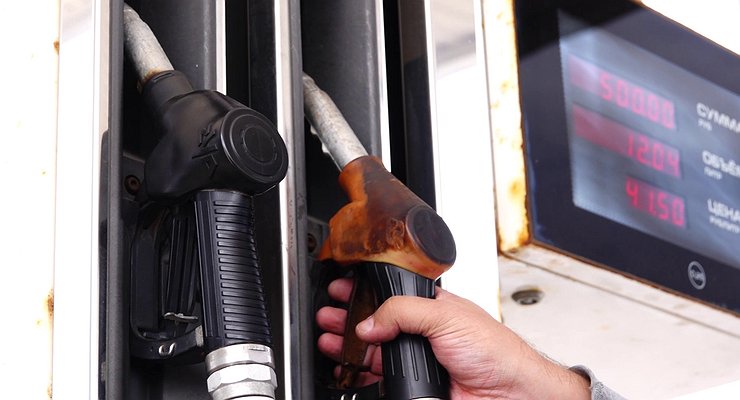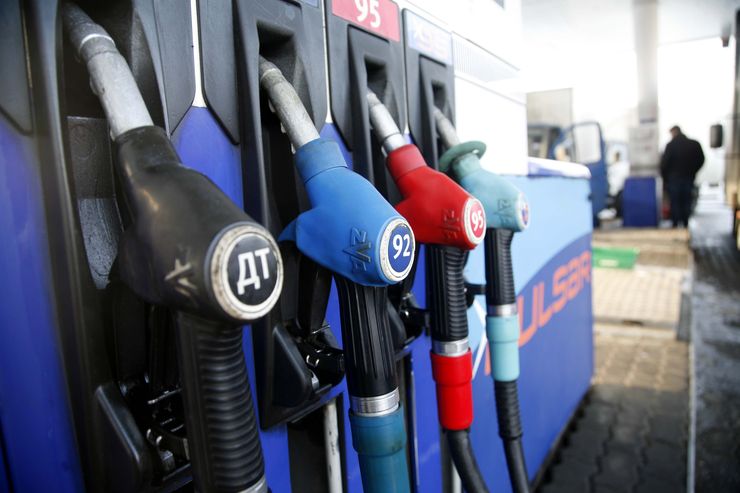When the car’s engine starts to vibrate, knock and the cylinders work “again”, motorists say it’s “troit”. Because of what this can happen, most car owners have a rough idea. But not everyone knows about the non-standard, but no less common reason for this well-known phenomenon. Details are on the AvtoVzglyad portal.
The term “troit” is slang. It denotes a process where of the engine’s four cylinders, for some reason, only three are working. This creates an imbalance in the rotation of the crankshaft, causing the cylinder block to appear to throb in an epileptic fit. Why does the engine sometimes behave this way when refueling with high octane fuel? And here it is worth recalling that the octane number is a parameter that determines the resistance of the fuel to detonation. The latter occurs when low-octane gasoline burns too quickly in the cylinder.
The resulting shock loads in the motor are manifested in the form of a roar, jerking and shaking of the device. That is, it turns out that the higher the octane number of gasoline, the better – the risk of explosion is smaller. Logically. But not really. Sometimes, in pursuit of better engine performance, the car owner refuels the car with high-octane AI-98. Sometimes such gasoline is poured to “clean the engine”, which in normal life consumes fuel with more modest performance. And after that, unexpectedly for the owner, the power unit begins to work unstable, really “troit”.
It’s all about the high octane rating of the fuel. Compared with the usual for the engine, it burns slower, more quietly, you could say – “worse”. This effect is particularly pronounced at idle speed, when the mixing of gasoline and air in the combustion chamber is less efficient than at high speeds. As a result, it is more difficult for candles to ignite a more “quiet” air-fuel mixture in the sense of detonation. So much so that there may be misfires in the ignition – “triple”. Typically, with an increase in speed, the mixture of gasoline and air in the cylinders is harmonized, and when you intensively press the accelerator pedal, the “triple” disappears.
Do not forget that, as a rule, fuel with a high octane rating is obtained by adding additional additives to the composition. When such gasoline is burned on candles, a raised layer of soot can form, preventing normal sparks. And accordingly, the occurrence of misfires in the ignition, manifested in the “triple” of the power unit. This problem can no longer be solved by the “gas method” – only by replacing the candles. In this regard, we can advise car owners to only refuel the car with fuel with the octane rating recommended by the car manufacturer – the car will be safer.
The term “troit” is slang. It denotes a process where of the engine’s four cylinders, for some reason, only three are working. This creates an imbalance in the rotation of the crankshaft, causing the cylinder block to appear to throb in an epileptic fit. Why does the engine sometimes behave this way when refueling with high octane fuel? And here it is worth recalling that the octane number is a parameter that determines the resistance of the fuel to detonation. The latter occurs when low-octane gasoline burns too quickly in the cylinder.
The resulting shock loads in the motor are manifested in the form of a roar, jerking and shaking of the device. That is, it turns out that the higher the octane number of gasoline, the better – the risk of explosion is smaller. Logically. But not really. Sometimes, in pursuit of better engine performance, the car owner refuels the car with high-octane AI-98. Sometimes such gasoline is poured to “clean the engine”, which in normal life consumes fuel with more modest performance. And after that, unexpectedly for the owner, the power unit begins to work unstable, really “troit”.
It’s all about the high octane rating of the fuel. Compared with the usual for the engine, it burns slower, more quietly, you could say – “worse”. This effect is particularly pronounced at idle speed, when the mixing of gasoline and air in the combustion chamber is less efficient than at high speeds. As a result, it is more difficult for candles to ignite a more “quiet” air-fuel mixture in the sense of detonation. So much so that there may be misfires in the ignition – “triple”. Typically, with an increase in speed, the mixture of gasoline and air in the cylinders is harmonized, and when you intensively press the accelerator pedal, the “triple” disappears.
Do not forget that, as a rule, fuel with a high octane rating is obtained by adding additional additives to the composition. When such gasoline is burned on candles, a raised layer of soot can form, preventing normal sparks. And, accordingly, the occurrence of misfires in the ignition, manifested in the “triple” of the power unit. This problem can no longer be solved by the “gas method” – only by replacing the candles. In this regard, we can advise car owners to only refuel the car with fuel with the octane rating recommended by the car manufacturer – the car will be safer.
Source: Avto Vzglyad
I’m Sandra Torres, a passionate journalist and content creator. My specialty lies in covering the latest gadgets, trends and tech news for Div Bracket. With over 5 years of experience as a professional writer, I have built up an impressive portfolio of published works that showcase my expertise in this field.









:quality(85)//cloudfront-us-east-1.images.arcpublishing.com/infobae/CT7W2G6LLVH6TAU2BE3JHKO3FQ.jpg)




